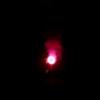Surely that is a crackling microstar formula?
- UK Pyrotechnics Society Forums
- → Viewing Profile: Posts: pyromaniac303
Community Stats
- Group UKPS Members
- Active Posts 632
- Profile Views 13,618
- Member Title Member
- Age 36 years old
- Birthday February 27, 1989
-
Gender
 Male
Male
-
Location
Gateford, Worksop, Notts.
-
Interests
All pyrotechnics and electronics related subjects.
User Tools
Latest Visitors
Posts I've Made
In Topic: kimbolton jumping jelly beans
12 November 2014 - 10:19 PM
In Topic: lightning thermo tube
20 August 2014 - 11:31 AM
I always wondered if it would be possible to make a home made version of this by forming a tube of self adhesive tape then funnelling flash through it until it has a thorough coating. I think your perchlorate and dark aluminium would need a significant amount of anti caking agent in there to stop it from forming clumps and getting stuck in the tube.
By using gummed paper tape you could wet one edge to roll the tube, then when ready to fill you could moisten the outer surface with a spray bottle to activate the adhesive (and hopefully it won't unwind!).
Looks like an interesting product anyway but can't say I've ever seen it used.
In Topic: Comets
21 July 2014 - 08:59 PM
Hi Predator,
Cavity comets are pumped in the usual way that solid comets are, but have an indent in the top which is usually filled with either a damp colour composition whch is then allowed to dry, or a breaking charge, then an end disc is glued on to seal it. During its ascent, it will reach the bursting charge or colour comp. and either shatter into small pieces or change colour. I think these are also called shattering comets. They're a bit like crossettes but with a more randomised break pattern.
Matrix comets are the same shape as regular comets, with a fast burning black powder composition that has a percentage of microstars added to it. These are then ignited and ejected leaving a coloured or strobe tail. This is the way in which most coloured glitters are done, they aren't actually glitter but instead thousands of tiny strobe stars in a matrix comet.
Married comets I'm not sure on, but I think they may be multiple layers of different composition that are stuck together then wrapped in paper, so that the comet changes colour or effect part way through its burn.
I'm sure other people will correct me if I've missed anything.
In Topic: OpenFire - Open source firing system
15 July 2014 - 11:30 AM
Qfps are the problem mainly , im etching from both sides to reduce under etch.
Sometimes the bit between pads goes though.
Laser stensils are just to dear.
What method are you using to align both sides of the artwork? If the pads are going through it may be a registration problem.
I have seen some reasonably priced kapton stencils for $25US here: http://ohararp.com/p...stencil-8-5x11/ they may do the trick for short runs, I was considering it myself but can't seem to find whether they ship to the UK.
In Topic: OpenFire - Open source firing system
13 July 2014 - 08:57 PM
Interesting, i have tried this with 3 thou copper and 2 thou ally (using peroxide etch).
Both cases i found too much past applied resulting in bridging.
Any tips you would like to share ?
What package sizes were you using? Also what are you using to block the etchant from the reverse side of the stencil? For mine I used enamel paint on the reverse side, then toner transfer on the front face, and touched up any odd bits with permanent marker under a halogen lamp so I could see any reflective exposed copper.
Sometimes helps to reduce the aperture size by a percentage if you have bridging problems, but I think if you are using anything smaller than TSSOP/MSOP or the really fine QFPs you're going to always end up with a couple of bridges unless you go for a laser cut stencil with clean walls, as the etching process makes them slightly rounded. I still had a couple of bridges but nothing that couldn't be cleared up with braid, it cut build time by 1/4 compared to hand-build, and also made it possible to use some QFNs with underside paddles.
I did some rapid fire tests last night on an old version (hardware 1) slave and was happy with the results: http://youtu.be/PUNd...eTuHX2Sui6Y5J_w
- UK Pyrotechnics Society Forums
- → Viewing Profile: Posts: pyromaniac303
- Privacy Policy
- Forum rules ·



 Find content
Find content


